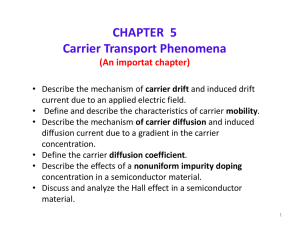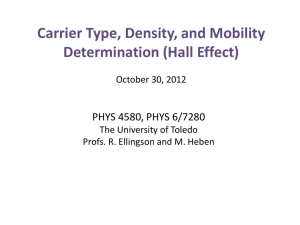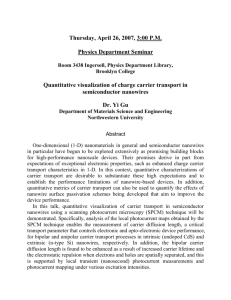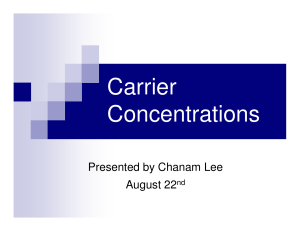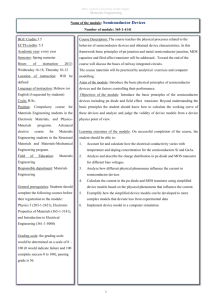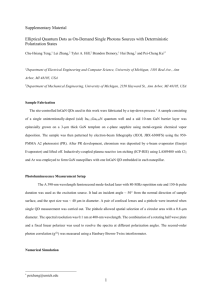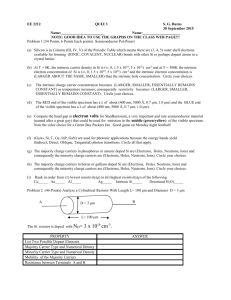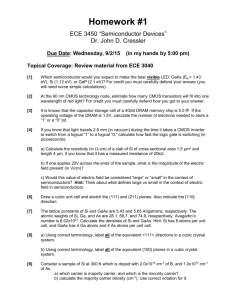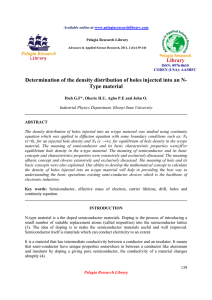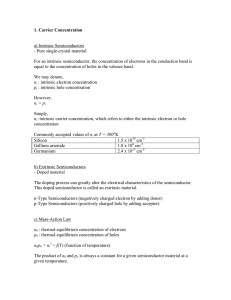Homework #1 - s3.amazonaws.com
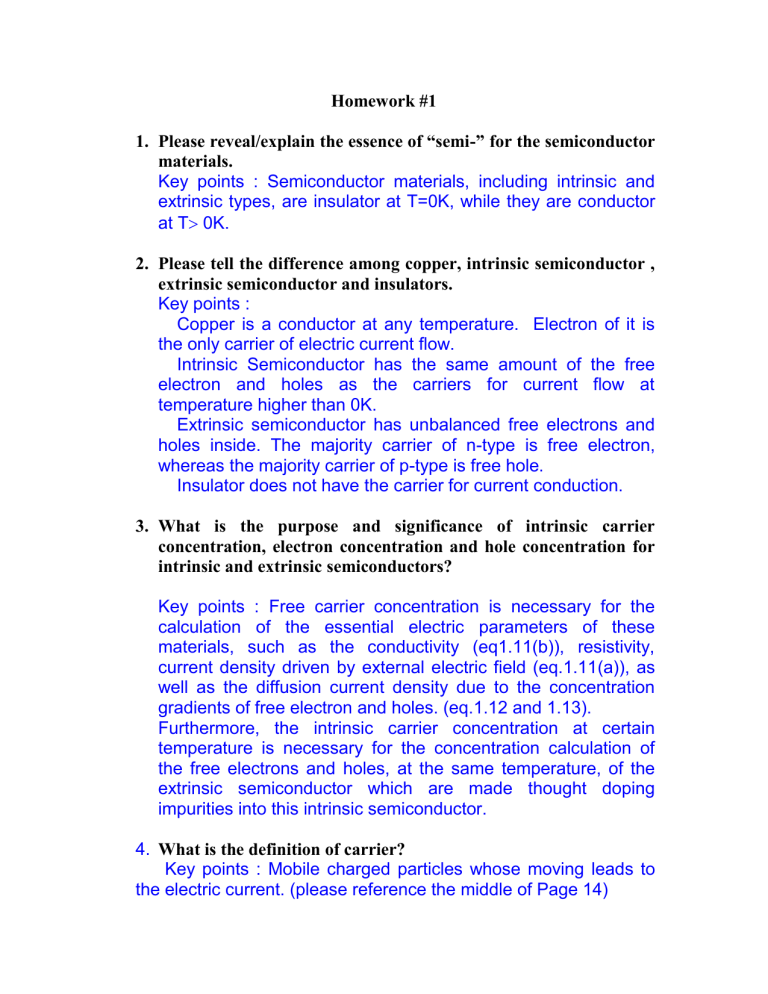
Homework #1
1.
Please reveal/explain the essence of “semi-” for the semiconductor materials.
Key points : Semiconductor materials, including intrinsic and extrinsic types, are insulator at T=0K, while they are conductor at T
0K.
2.
Please tell the difference among copper, intrinsic semiconductor , extrinsic semiconductor and insulators.
Key points :
Copper is a conductor at any temperature. Electron of it is the only carrier of electric current flow.
Intrinsic Semiconductor has the same amount of the free electron and holes as the carriers for current flow at temperature higher than 0K.
Extrinsic semiconductor has unbalanced free electrons and holes inside. The majority carrier of n-type is free electron, whereas the majority carrier of p-type is free hole.
Insulator does not have the carrier for current conduction.
3.
What is the purpose and significance of intrinsic carrier concentration, electron concentration and hole concentration for intrinsic and extrinsic semiconductors?
Key points : Free carrier concentration is necessary for the calculation of the essential electric parameters of these materials, such as the conductivity (eq1.11(b)), resistivity, current density driven by external electric field (eq.1.11(a)), as well as the diffusion current density due to the concentration gradients of free electron and holes. (eq.1.12 and 1.13).
Furthermore, the intrinsic carrier concentration at certain temperature is necessary for the concentration calculation of the free electrons and holes, at the same temperature, of the extrinsic semiconductor which are made thought doping impurities into this intrinsic semiconductor.
4. What is the definition of carrier?
Key points : Mobile charged particles whose moving leads to the electric current. (please reference the middle of Page 14)
5.
Silicon is doped with 2
10 17 boron atoms/cm 3 . (a) Is the material n- or p-type? (b) calculate the electron and hole concentrations at
T =300K, and 250K respectively (c) what is the total carrier concentration at T =300K, and 250K respectively.
Key points : The first two parts are from Problem 1.7
Total carrier concentration should be the sum of electron’s and hole’s.
6.
Problem 1.9
7.
Please explain how many types of current possibly exist in a semiconductor? How to calculate the total current flowing inside it? (weight:15%)
Key points : Drift Currents of Hole and electron (when there is external electric field, E, being applied and there are free electrons
and holes available as the carriers) and Diffusion Currents of
Electron and Hole (as long as there is when there is concentration gradient of these free carriers ).
The drift current and diffusion current can be calculated with eq1.11(a) and eq.1.12 and 1.13 by counting in both electrons and holes.
The total current density is the sum of the drift and diffusion component. In most case, only one component dominants the current at any one time in a given region of a semiconductor.
8.
When the temperature increases, how do the thermal voltage V
T and the built-in potential barrier V bi
of a P-N junction vary?
Please tell the reason based on its equation (eq1.16). (weight:15%)
Key points : When temperature increases, based on eq 1.16, the thermal voltage V
T
will increase, whereas the built-in potential barrier V bi
will decrease. From this equation, though V
T
increases, the intrinsic carrier concentration n i
at the higher temperature will become larger. Therefore, the increasing of n i
will dominant the tendency of V bi
with temperature
9.
To forward biasing a P-N junction diode, what is the maximum voltage can be applied? (weight:15%)
Key points : The forward biasing voltage must always be less than the built-in potential barrier V bi
. (please reference the statements in the middle of Page 24)


